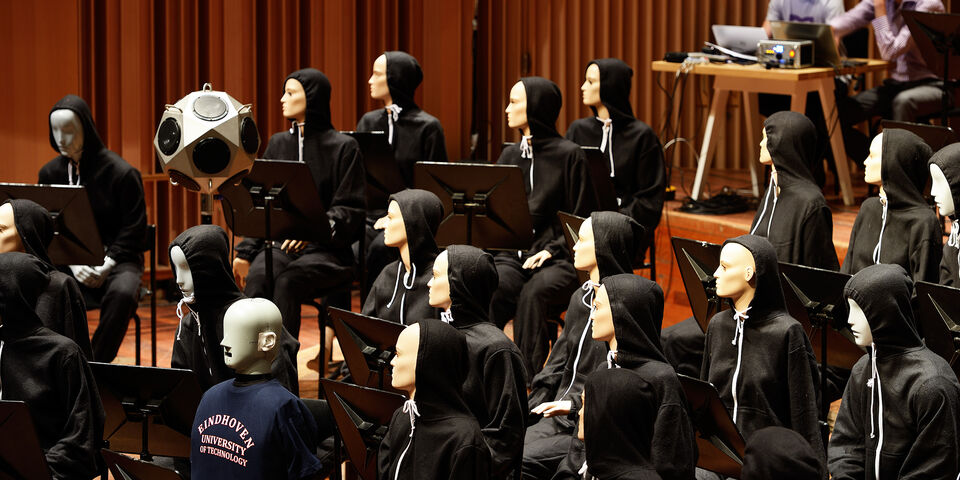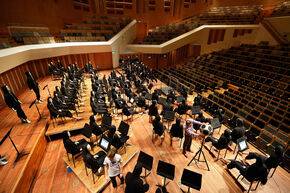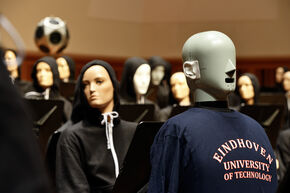Mannequin orchestra test stage acoustics
How does a musician experience the sound they and their fellow orchestra members produce when they play? In the young history of stage acoustics, that issue hasn't been studied much. And it's never been done the way TU/e PhD student Remy Wenmaekers is doing it: where his precursors worked with empty chairs for their tests, he's seated mannequins.
Eighty mannequins in black hooded track suits are waiting on the stage of the Eindhoven Muziekgebouw. One of them is active. That is, its plastic head has been fitted with measuring equipment. The others are there to absorb and block sounds, just as the bodies of actual orchestra members would do. Then sounds are broadcasted through a spherical speaker that researcher Remy Wenmaekers places in six different positions. The mannequin with the measuring equipment will measure sound from twelve positions.
Wenmaekers is a structural engineer, researcher at TU/e, and acoustics advisor at Level Acoustics. He's doing his PhD on acoustic comfort at concert venues. To that end, he's conducting research in a concert hall (Muziekgebouw Eindhoven), a theater (Parktheater Eindhoven), and an opera hall (National Opera & Ballet, Amsterdam). His aim is to create new guidelines for music stage design.
Wenmakers is very positive about the stage at the Eindhoven Muziekgebouw. In Eindhoven, the sound on stage has the opportunity to reflect as well as spread, thanks to the solid white border over the musicians' heads and the relief paneling surrounding the floor. "The Amsterdam Concertgebouw is very different in that respect. There, the audience is very close to the stage, so they absorb most of the orchestra's sound - as a result, orchestra members can barely hear what they're playing."







Discussion